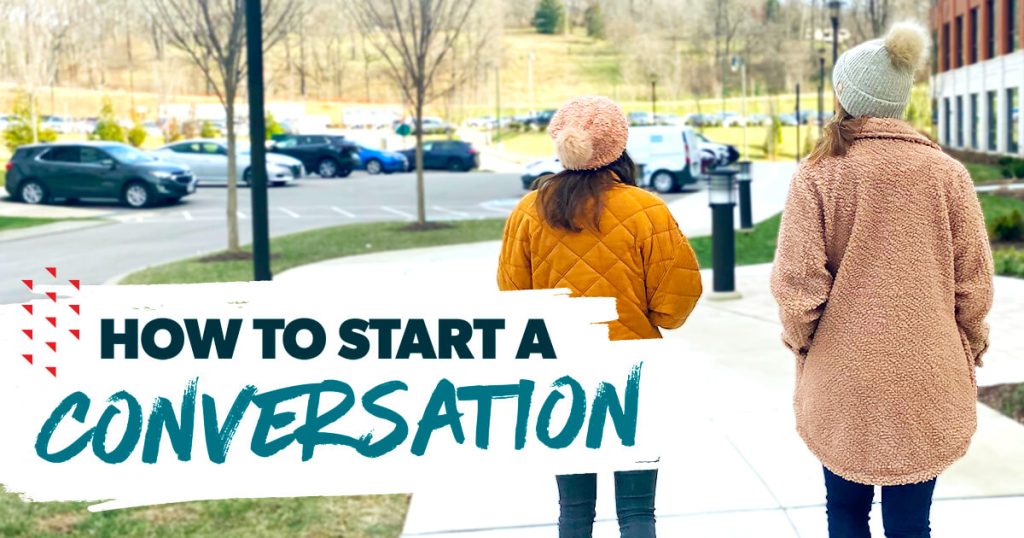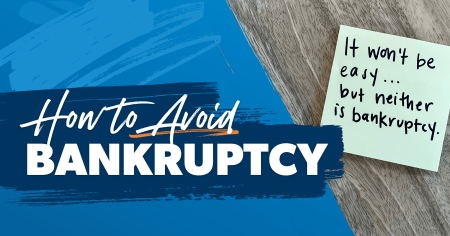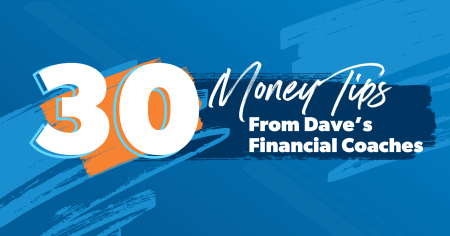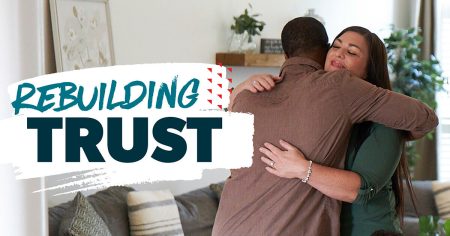There she is! Walking toward me! What do I say?
We’ve all been there—not knowing what to say during a social situation. And in this mindlessly digital age, live, in-person exchanges seem rarer (and harder) than ever.
At the biological, psychological and spiritual levels, we’re starving for human connection. We just don’t know how to do it anymore.
If you think starting a conversation feels awkward or even terrifying, you’re not alone. Most of us choose withdrawal or distraction over connection. And when texting and emailing feel safer and just plain easier, it seems harder to find folks who know how to start a conversation. But that’s all going to change today.
How to Start a Conversation Naturally
Point-blank, we have to connect with real people through real conversations. Our lives depend on it. Thankfully, it’s a skill we can all practice.
A quick caveat: The following tips are for in-person conversations with real-life human beings. You can apply some of them to text and email and the internets, but I’m more concerned with helping you connect with people face to face.
1. Don’t overthink it.
We spend so much time in our own heads. We obsess over how we look, how we’re standing, how we’re moving, whether our laugh is too loud or too quiet, and whether anyone noticed we forgot to pluck our crazy eyebrows.
Relax.
The good news is, most people are thinking about themselves and not you. The even better news is, if someone’s going to judge you on your eyebrows, you don’t want to spend time with them anyway. Win-win.
2. Make eye contact.
Having a conversation isn’t just a verbal process—it’s also a bodily experience. When you’re getting ready to talk to someone, whether it’s at a birthday party or a family reunion or on a first date, start by facing the person and gently looking them in the eye (a quick moment will do—no need to overdo it).
Super intense eye contact can come on too strong. Keeping it light and friendly with a smile can go a long way to break the ice.
3. Pay attention to body language and tone.
Like I said earlier, human connection isn’t just about what you say—it’s also how you say it. Body movement and behavior is a language. Pay attention to your tone of voice, facial expressions, hand motions and body placement as you gear up to start a conversation. And look out for your default social anxiety responses or insecurity ticks. Are you keeping a good personal space bubble? Does your smile feel genuine or forced? Are you mumbling (this is my annoying insecurity default) or talking too loudly? Remember to be yourself. You’re worth talking to.
Also, notice the other person’s body language. Are they in a hurry? Are they inching toward the door? If they’re turned away, it’s a subtle, subconscious cue that it’s time to move on.
4. Introduce yourself.
Okay, once you’ve noticed someone to talk to, how do you make the first move? Sometimes the best opener is to introduce yourself. It’s a natural way to go first, and it gives the other person a nonthreatening way to respond.
Example: Hi, I’m John! Nice to meet you.
Pro tip: If all your fears come true and a silence of doom follows, you can follow up with an encouraging nudge, such as, “And you are . . .?” And if they don’t take the bait, move on instead of dwelling in disappointment.
5. Don’t be afraid of silence.
Silence can feel super awkward—but it’s not automatically a massive rejection. We’ve been programmed to fill every social space with movement, noise and repeated attempts to engage. But silence isn’t bad. In fact, if we’d all just slow down a bit, we’d realize gaps in conversations can help people connect.
Want to build a non-anxious life? Learn how in Dr. John Delony’s new book.
Give the conversation breathing room. If silence naturally enters the conversation, simply notice it, breathe through it, and choose to not feel lonely in the absence of conversation.
6. Find common ground.
After you get the ball rolling, start asking questions that will help you find something in common with this person—whether it’s work or hobbies or your alma mater. Once you strike gold, you can explore the topic to deepen your conversation. You might even make a new friend.
7. Make the other person the star of the show.
This is the big one—so pay close attention here. Engaging someone in conversation is a great way to love people. It’s a way to be hospitable. It’s a way to honor other people while boosting our own mood. (No, I’m not exaggerating.) Dietrich Bonhoeffer, a German pastor and author, wrote, “The first service one owes to others in the community involves listening to them.” I think he’s onto something.
In graduate school, I took classes on listening. Like how to listen—really listen—and not just wait for the other person to take a breath so I could blast into the conversation with my thoughts and opinions.
Few things help someone else feel appreciated, known and loved like true listening.
In your conversations with others, picture yourself holding up a spotlight and shining it on the other person, showing you care about the details of their lives. Be interested, not interesting.
Pro tip: Take opportunities to turn the conversation back on the other person with open-ended and follow-up questions (see the next two points).
8. Ask open-ended questions.
Yes or no questions are dead-end conversation starters. Push yourself to ask open-ended questions, inviting the other person to take you to places you might not expect.
Pro tip: Questions and icebreakers that begin with what or how usually generate open-ended answers.
9. Ask follow-up questions.
So many conversations are like a game of Ping-Pong—you’re hitting a ball of questions and stories back and forth without any real engagement. Instead of waiting for your turn to speak, ask follow-up questions that will help you get to know the other person better—especially when you notice someone is excited about a certain topic. This is simple emotional intelligence.
10. Try these go-to check-ins.
Okay, this advice is for people you actually know, not complete strangers (unless you’re an otherworldly conversation wizard who can make friends on the spot). Just because we see friends, family and coworkers often doesn’t mean we’re connected to them. We might feel lonely in a crowded room. But you can turn all that on its head by starting a good conversation.
Example: Try the Rose, Thorn, Bud check-in with your spouse, a group of friends, or maybe even an acquaintance you’d like to get to know better.
- Rose: What good things are going on in your life right now?
- Thorn: What difficulties are you facing?
- Bud: What’s one thing you’re looking forward to?
11. Don’t take yourself too seriously.
We can easily psych ourselves out and make having a conversation a way bigger deal than it needs to be. The goal of a conversation isn’t to get a five-star review—you’re just trying to connect with another human being. And 99.9% of the time, people will appreciate the effort you’re making to get to know them—even if it’s unexpected or even slightly awkward.
Go all out. Put down your phones, muster up a smile, and have fun!
Examples of Conversation Starters
I can guarantee you most of the time when you start a conversation with someone, they’ll be relieved you initiated talking first—it takes the pressure off them! Here are a few examples of conversation starters and icebreakers you can use in different scenarios:
When you’re connecting over common ground:
How do you know so-and-so (the host of your gathering)?
How long have you worked here/lived here/gone to church here?
What’s that book you’re reading?
My family and I love to hike too. Are there any trails you recommend?
When you want to make them the star:
What’s your story?
What’s a typical day at work like for you?
How did you become so passionate about [topic/job/hobby]?
Those may be the coolest shoes I’ve ever seen. What do you love about them?
What’s your favorite [menu item/place to go/thing to do] here?
That’s a great jacket. Do you know any good vintage shops around here?
When you want to ask follow-up questions:
Tell me more about that!
Wow! What was that like?
What was your favorite part about that vacation you just took?
Why are they your favorite band?
Things to Avoid in Conversation
Now that you know some solid tips to get the conversation started, here are a few pointers around what not to do.
Stay away from controversial topics around race, religion and politics.
Try to keep the conversation light when you first meet someone. This isn’t the best time to talk about border patrol or gun rights or other hot topics.
Don’t dump all your trauma on the other person.
Stories about your past hurts and heartbreaks are valid—but share them with your therapist who’s trained in empathy and sympathy, not the guy sitting next to you at the coffee shop.
Don’t gossip.
Bad-mouthing anyone or anything in your environment is never a good look. Take the high road and keep the conversation positive.
Don’t zone out or think of what to reply before the other person finishes talking.
Listen, and listen well. This will help you give a more thoughtful reply when it is your turn to speak.
Hogging the spotlight.
Conversation should flow back and forth. In a healthy dialogue, both people will be seen and heard.
Wondering How to Make Small Talk? Use These Conversation Starters.
If you want to connect with other humans, I’ve got just the tool to make it fun and easy. Check out my Questions for Humans Conversation Cards. They’ll help you improve your relationships with just about anyone in your life. Each deck contains 52 conversation starter cards that are fun and thought-provoking. I promise you’ll learn something unexpected, get some laughs, and find it much, much easier to connect. Try them out today.
Read the full article here










